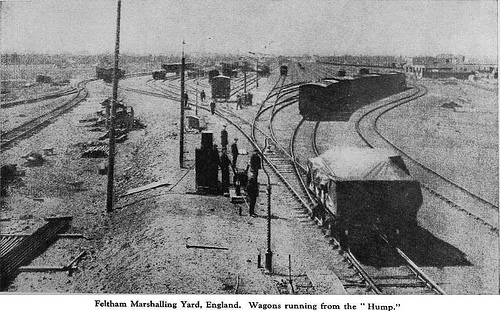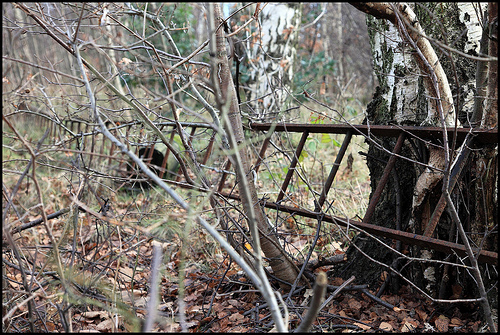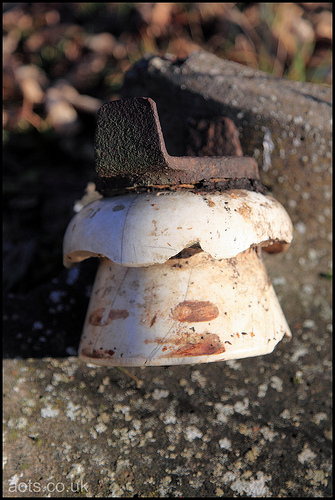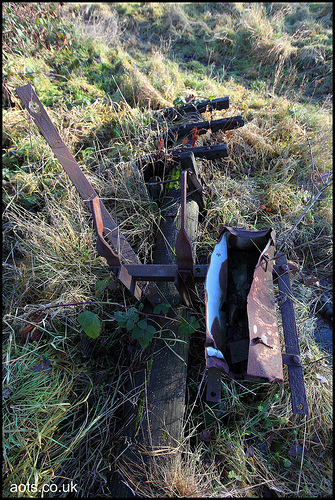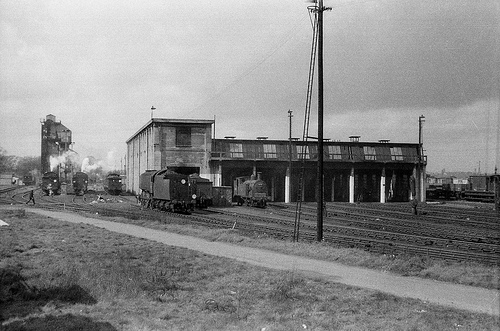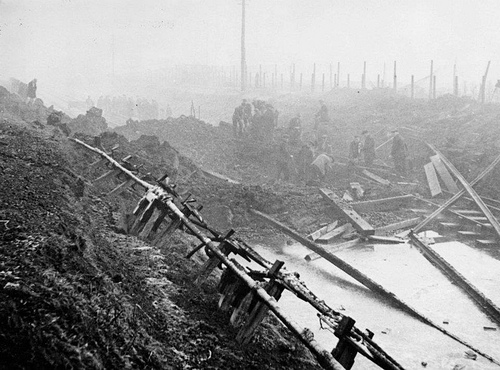Feltham Marshalling Yards
Feltham Marshalling Yard was once one of the busiest in the country handling up to 7000 wagons per day. Nowadays the area is a nature reserve on land still owned by Network rail but some traces of its past remain if you look hard enough. The tunnel pictured is still there and was located under one of two humps where wagons would be pushed up at 2mph, uncoupled, chalked with their siding destination and then rolled down the incline to be switched into their correct location. Virtually all of the structures of Feltham Marshalling Yard have been removed so it was a real surprise to find this still existing in 2011 – it’s a bit out of the way but if the proposed Airtrack scheme goes ahead even this relic may not last much longer. While pretty much every other trace of Feltham yards 32 miles of track has been bulldozed or removed there are a few clues scattered around. Either too small or insignificant to be noticed or perhaps too heavy to bother moving I found a few relics still there. Scroll down for more photos.
A little bit more on the history of the yards:
The opening of Feltham Marshalling Yards was more of an evolution than a ceremony on a specific date. Taking traffic from a previous shed at Strawberry Hill the project was initiated by the LSWR but was not fully complete until grouping. Key elements of the yards included a 65ft turntable , a mechanical coaling plant and a engine shed complete with a 50 tin overhead crane for assisting with repairs. Once fully operational around 80 steam locomotives operated at the location and it saw its first diesel shunters in 1954. The depot reduced in importance as road travel took off and although there were plans for it to continue after the demise of steam in 1967 the proposed diesel sheds were never built.
Feltham Marshalling Yards were a target in the Second World War. A land mine dropped at 3am one morning destroyed around 150 wagons but the yard was once again operational just six hours later. Elsewhere a bomb landed on the hump blowing the rails so high that they went over the nearby signal box. The yards were key in moving equipment destined for use in the D_Day landings by American and Canadian servicemen. Tanks, fuel supplies and even bridge parts transited the yard on their way to their coastal departure points.
Feltham Marshalling Yard in its heyday with a wagon rolling away from the hump.
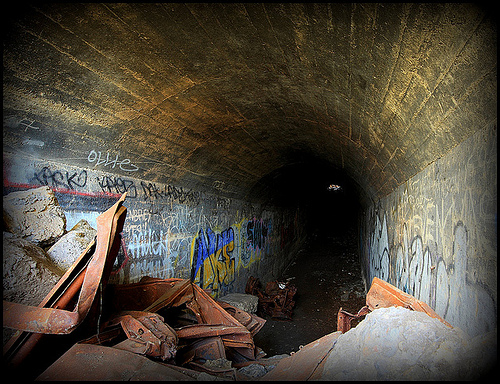
The tunnel under the gravity hump at Feltham Marshalling Yards
Further remnants of what was once Britains second largest sidings complex in Feltham, West London
An old ladder gently rusting away in the overgrown old yards
A more recent addition perhaps, this looks like a ceramic chair used to hold the third rail in place and is marked up BR.
Feltham Yards was once home to a state of the art telecommunications system parts of which now sit among the unchecked wilderness.
The engine shed and coaling stage at Feltham Marshalling Yard
Bomb damage in the yard during the Second World War. Amazingly operations resumed within 24 hours – unexploded bombs actually took longer to resolve.

